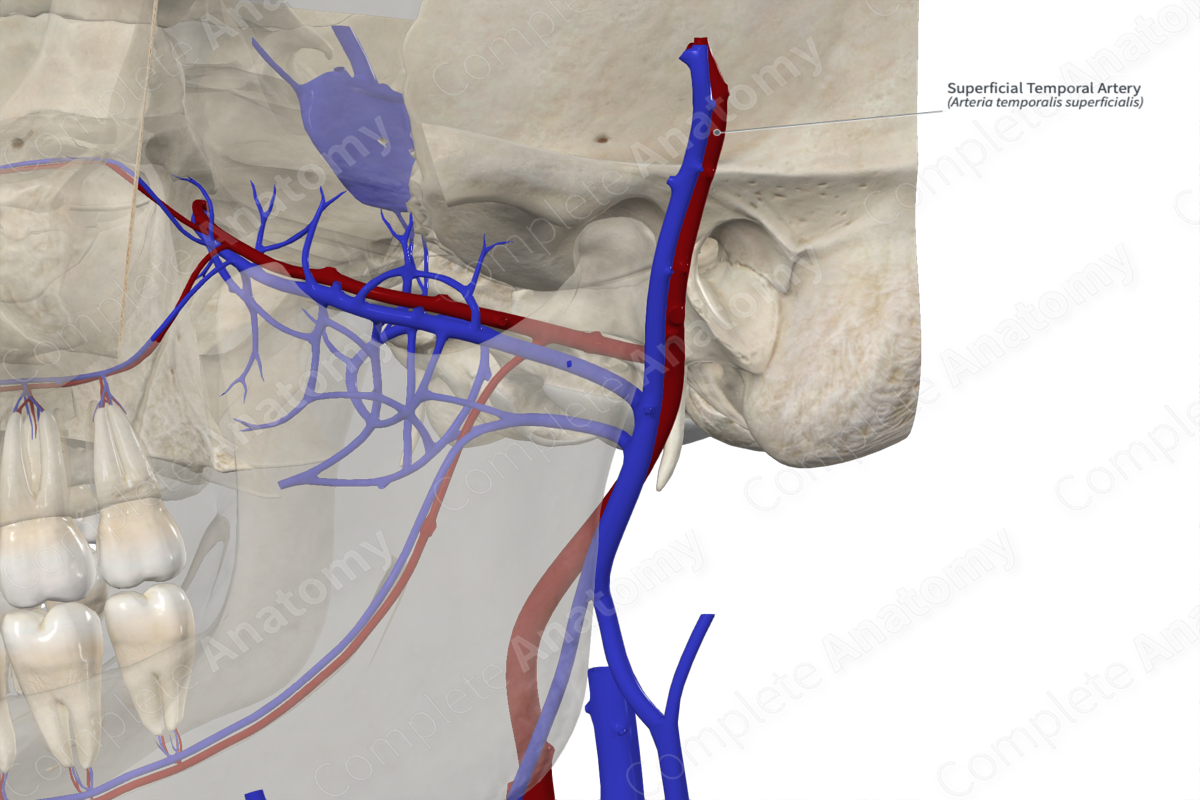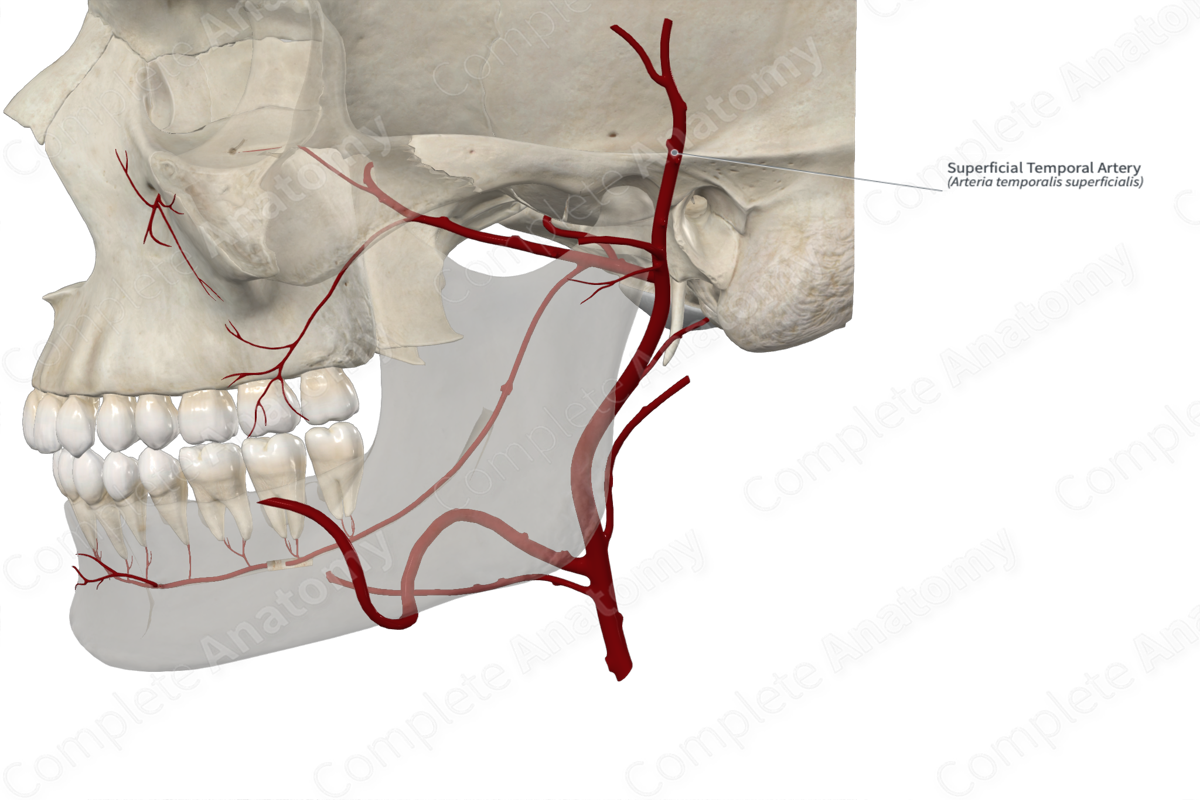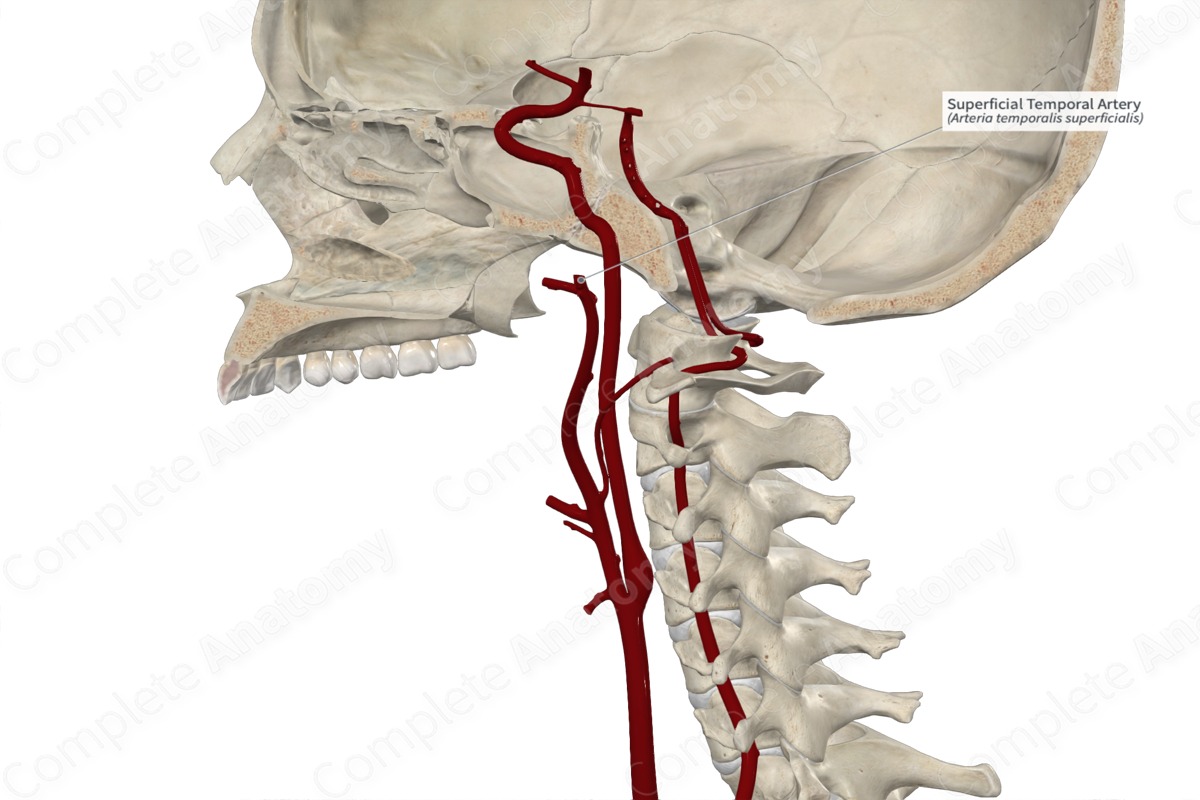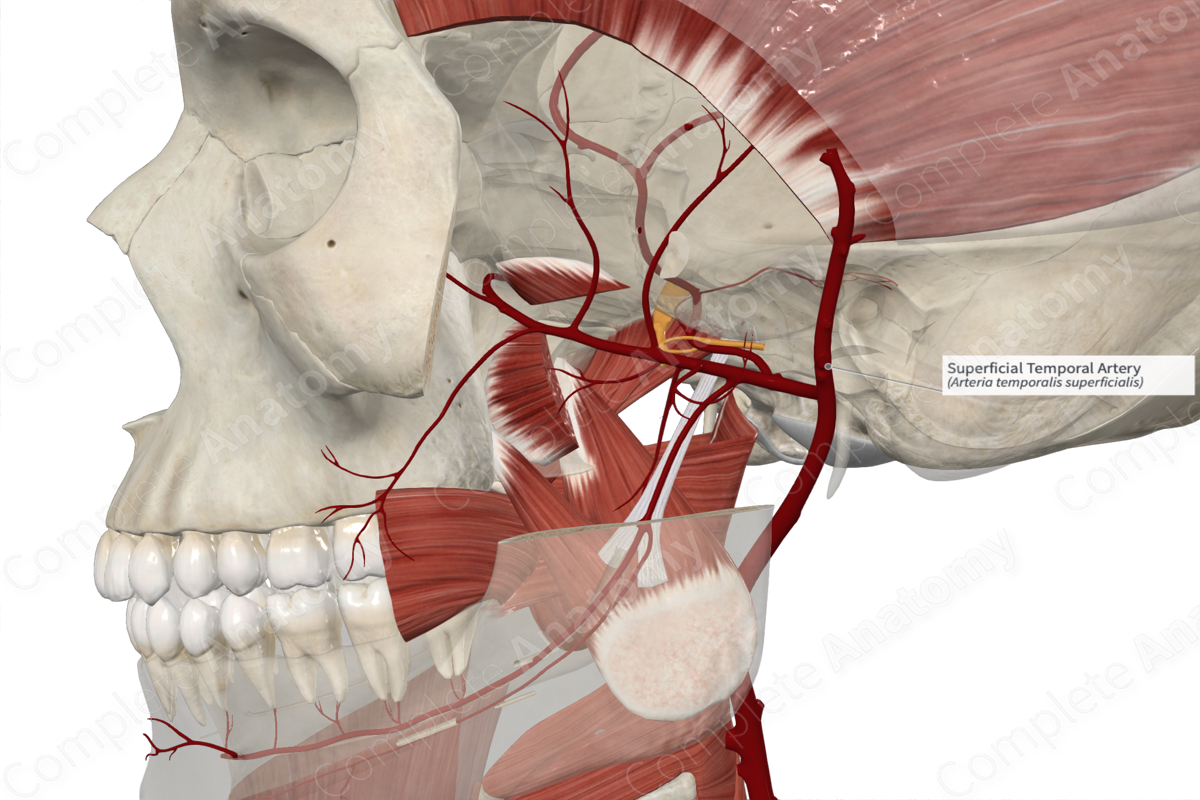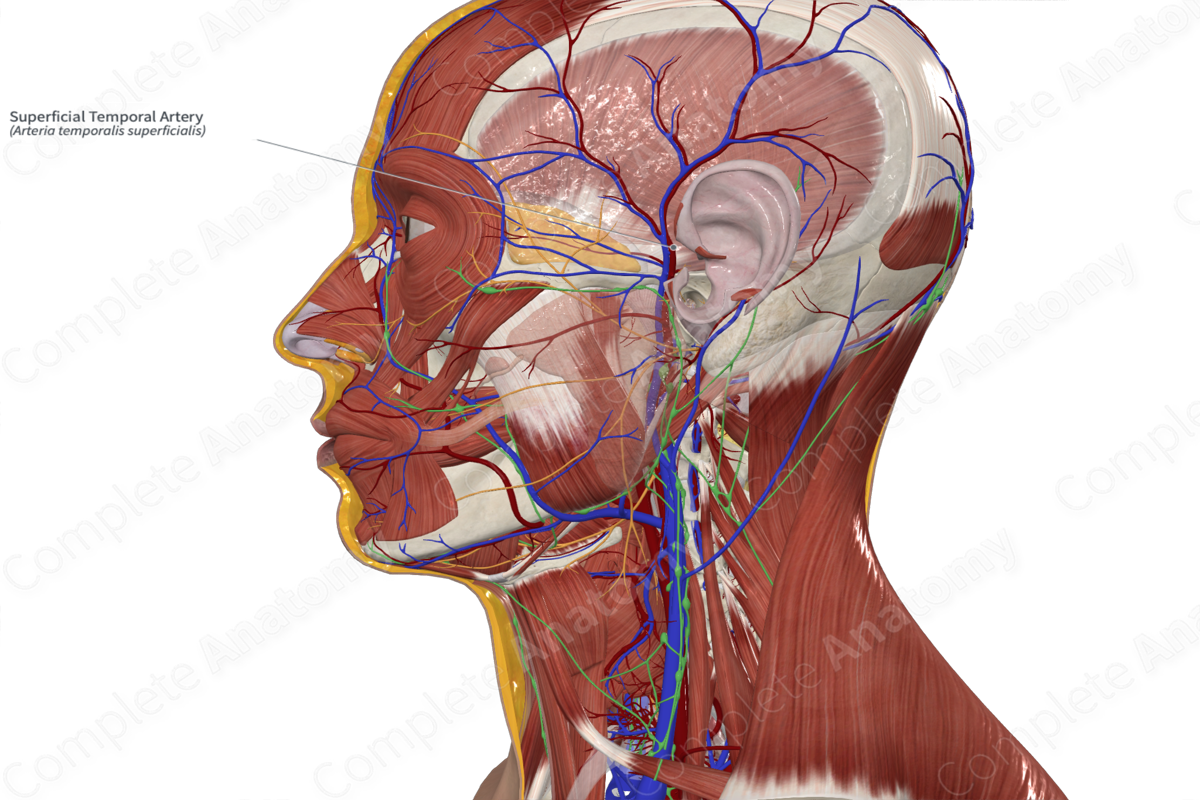
Quick Facts
Origin: External carotid artery.
Course: Ascends to the scalp.
Branches: Transverse facial, zygomaticoorbital, and middle temporal arteries, parotid, anterior auricular, occipital, frontal, and parietal branches.
Supplied Structures: Structures of the parotid and temporal regions.
Related parts of the anatomy
Origin
The superficial temporal artery arises as the smaller terminal branch of the external carotid artery, within the substance of the parotid gland behind the neck of the mandible.
Course
The superficial temporal artery ascends superficially, passing over the zygomatic process of the temporal bone. It continues to ascend, with the auriculotemporal nerve, to the scalp for about 4 cm. It terminates by dividing into its terminal frontal and parietal branches. Because of its superficial location, the pulse of the superficial temporal artery can be palpable immediately anterior to the tragus of auricle.
Branches
The superficial temporal artery provides several named branches, including the transverse facial, zygomaticoorbital, and middle temporal arteries. Additionally, it provides parotid, anterior auricular, occipital, frontal, and parietal branches.
Supplied Structures
The superficial temporal artery provides arterial supply to the skin and muscles of the side of the face and scalp. It also supplies the parotid gland and temporomandibular joint.
Learn more about this topic from other Elsevier products

